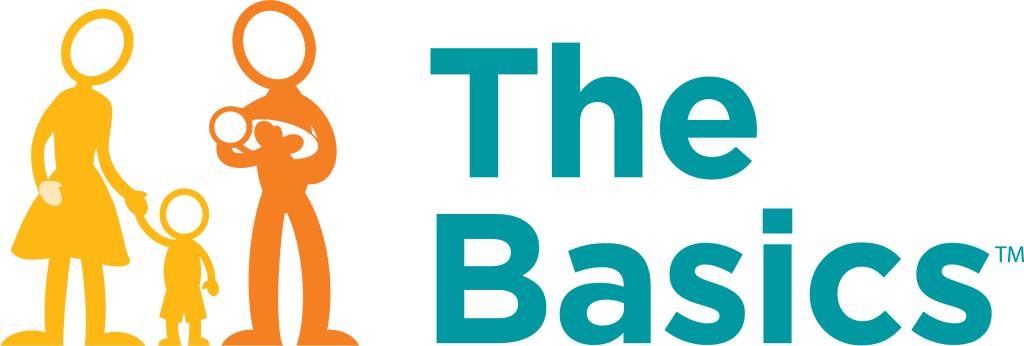The Basics Guilford Activity Kit
Maximize Love, Manage Stress
Infants and toddlers thrive when their world seems loving, safe, and predictable. When you express love and respond to their needs, you teach children that they can count on you.
Over time, showing and responding to love helps children learn to manage their feelings and behavior. As they grow, feeling secure in their relationships gives them the confidence they need to explore, learn, and take on life’s challenges. Young children are affected by your emotions, both good and bad. So, it is important to find strategies that help you cope with stress. Caring for yourself benefits your child.
Activity
The yoga cards are a great tool for a true release of stress. Spend some time modeling the poses for your child and get them to join you! Turn down the lights, turn on some soothing music, and get your bodies moving to help calm any stresses from your day.
Talk, Sing and Point
Babies are learning language from the moment they are born. To a newborn baby, speech is just sound. Then, day by day, they learn that the sounds have meaning. This process depends on how much people talk to them. Every time you talk, sing, or point to what you are talking about, you provide clues to the meaning of what you are saying. You are providing important information to their brains about how language works. As your child develops, talking with them and answering their questions is a way to teach them about the world. By talking with them, you will also get to know the fascinating person they are becoming!
Activity
The Kindermusik® kit provides you with some great ideas on how to use the included instruments and musical book. Use the guide to help make music and song part of your daily routines!
Count, Group and Compare
Becoming good at math begins long before a child enters school. Even infants are wired to learn simple math ideas, including small numbers, patterns and making comparisons. You don’t need to be a math teacher to start preparing your child to be a problem solver. There are fun and simple activities that you can do now to build math and thinking skills.
Activity
The colorful counters can be used in many ways. Besides practicing counting, use these counters to compare colors, sizes, and shapes with other objects. Words like “less”, “more”, “over”, “under”, “in”, and “out” are all basic math concepts. Be intentional in using these words and see where your child’s learning can take you!
Explore Through Movement and Play
Movement and play are good for children’s coordination, strength, and overall health. They are also ways that children explore and learn about the world. Each stage of development comes with new opportunities for learning. For example, an infant might explore by touching, grasping, chewing, or crawling. A toddler might explore by walking or climbing.
Young children are like scientists—curious and excited to explore their surroundings. See where your child’s curiosity takes them. The more you pay attention, the more you will learn about the person they are becoming.
Activity
The movement scarves provide endless opportunities for movement and play! For small babies, use them to compare different textures, encourage them to practice reaching during tummy time, or use them to play Peek-a-Boo. Older children can use these to dance with, add to a dress up costume, or to create a mystery bag!
Read and Discuss Stories
The more we read with young children, the more prepared they become to enjoy reading and to do well in school. It is never too early to begin reading! Stories expose children to words and ideas that they would not otherwise experience. Books teach children to use their imaginations. What they learn about people, places and things can be important building blocks to later life success. For both parents and children, times together with books form fond and lasting memories.
Activity
The two books that are included in this kit will help you make book time part of your daily routine. Hold your child in your lap as you read so they can see the pictures and feel cozy. Ask questions, talk about and point to new words, and make connections to your lives or other books. As your child guides the reading experience, you can be intentional about using ALL of the Basics in this special time together.







